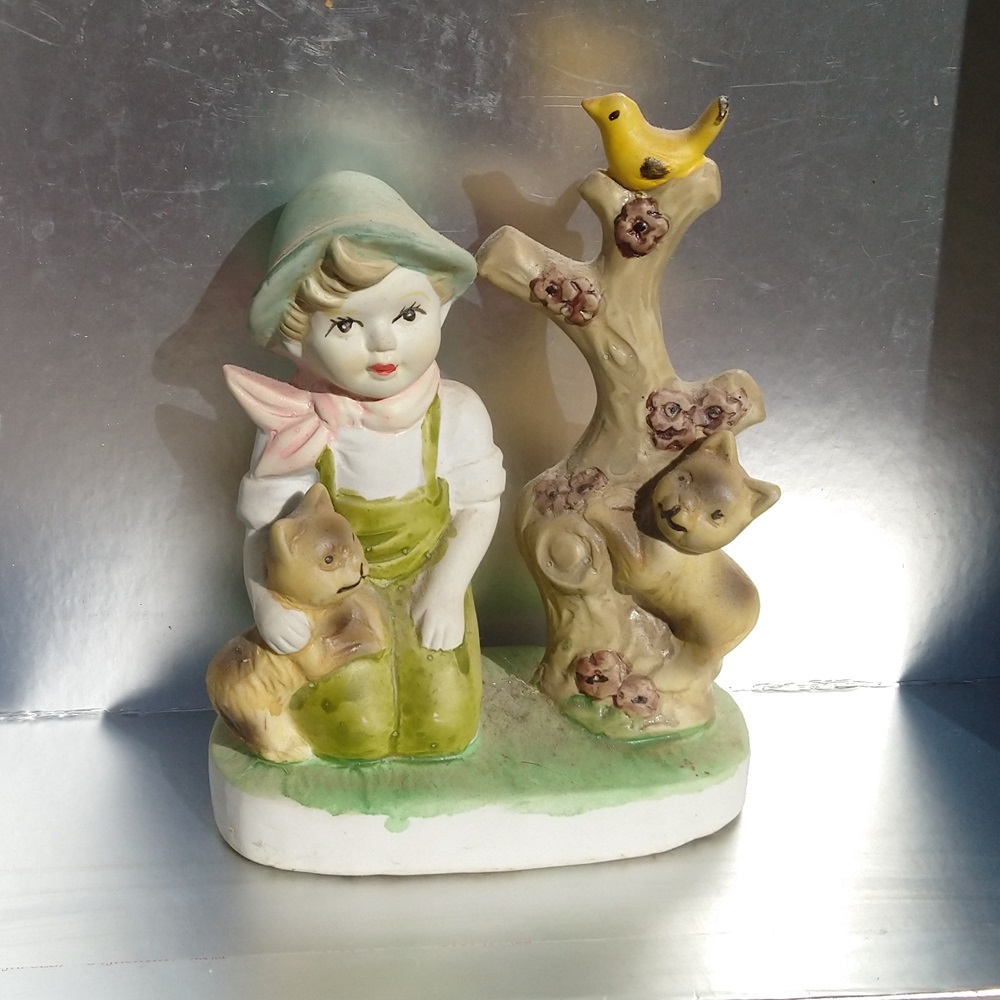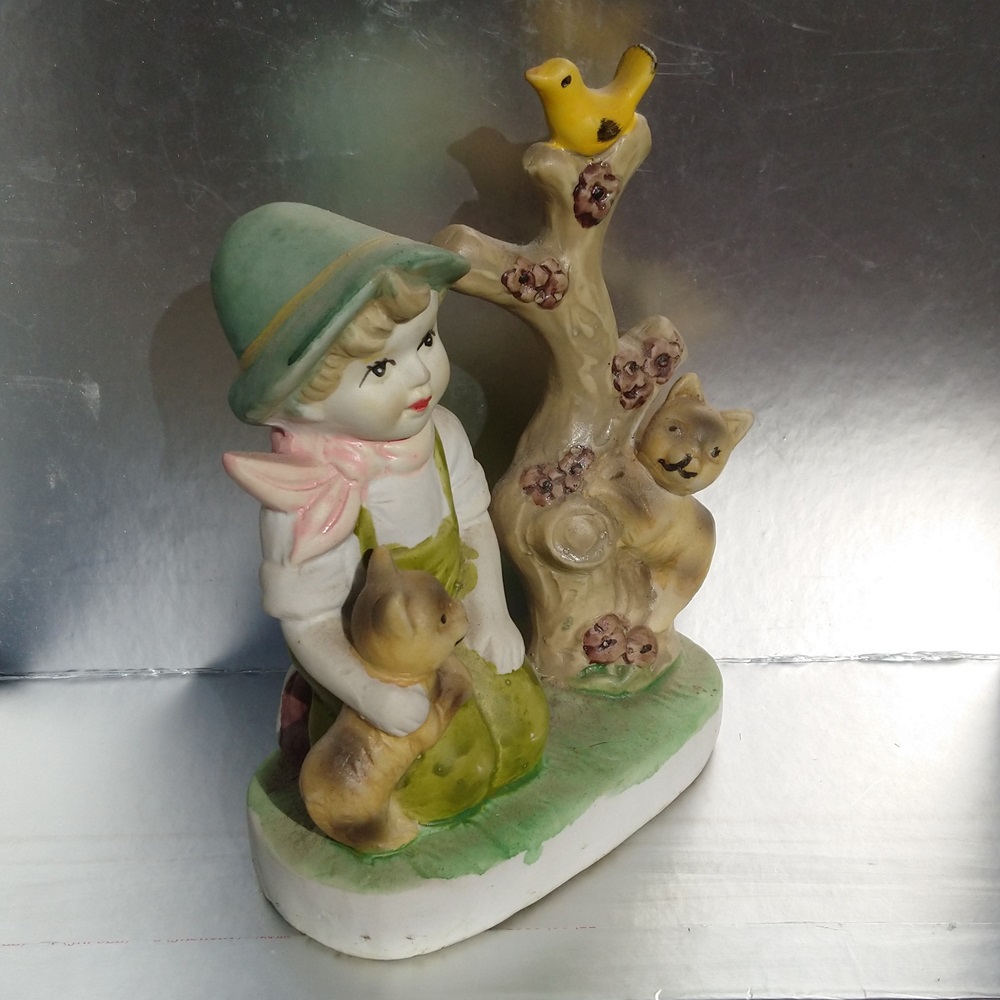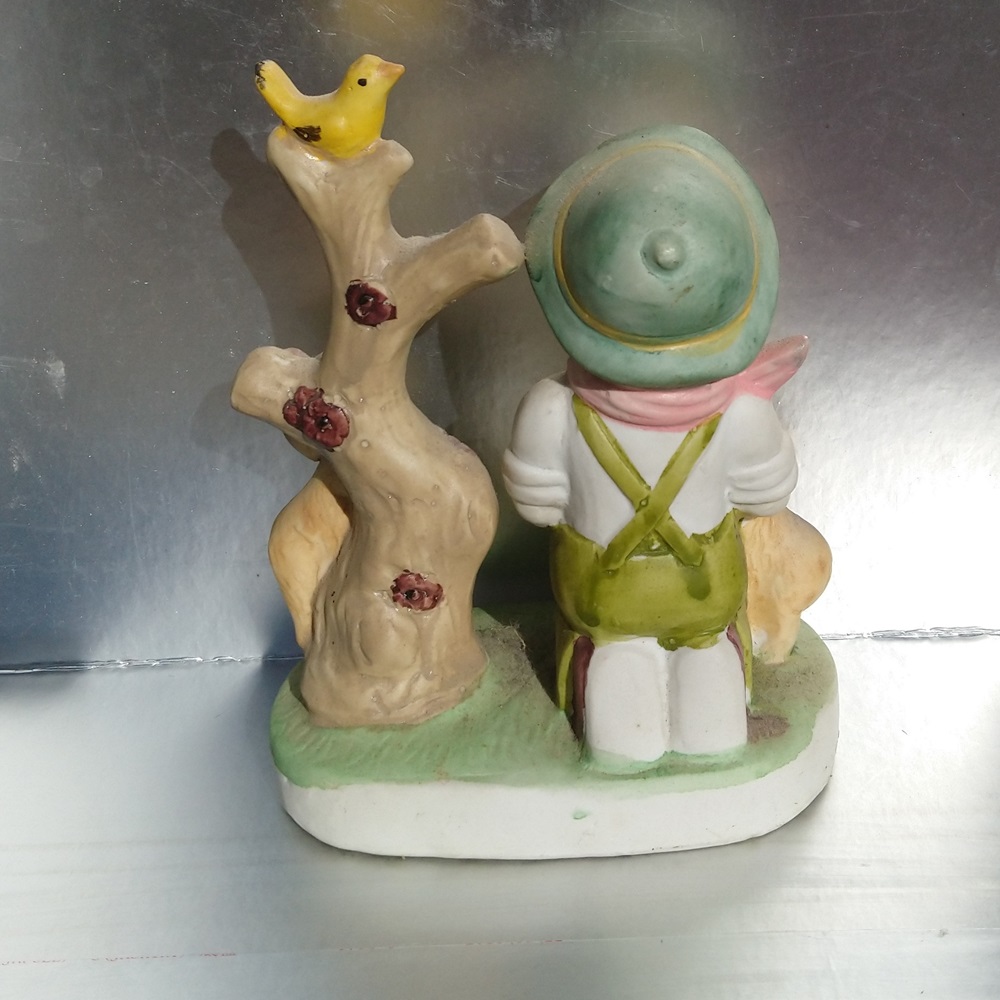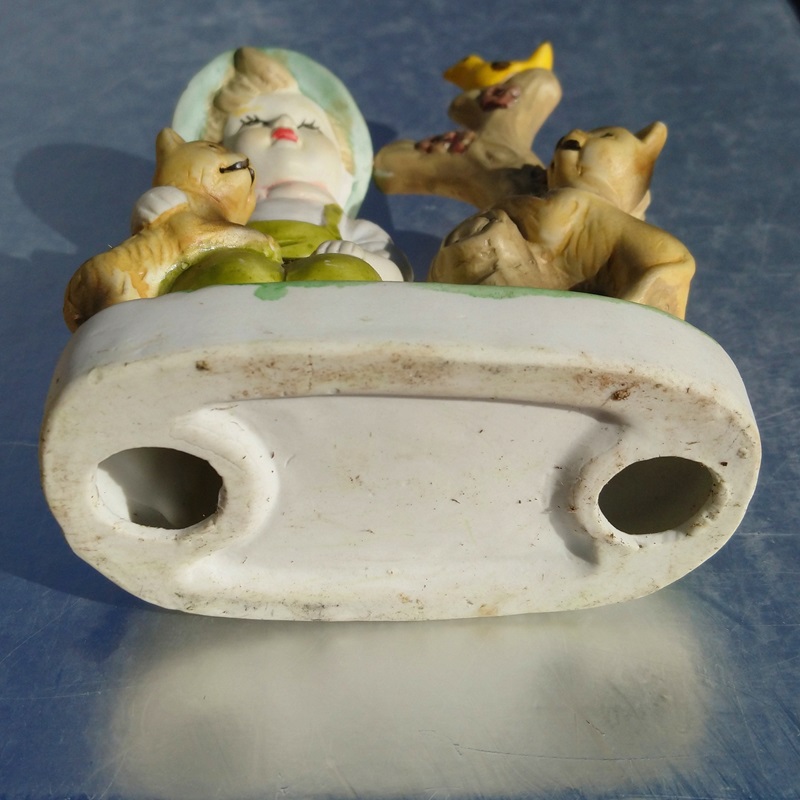




Sujet champêtre en porcelaine biscuit - Rural subject in biscuit porcelain
19.00 €
Référence : 24-00106
Sujet porcelaine biscuit
Dimensions :Hauteur : 13 cm
largeur : 9,8 cm
Epaisseur : 5,5 cm
Très bon état.
La porcelaine a été produite en Europe et notamment en France à Limoges grâce au père jésuite François-Xavier d'Entrecolles qui avait étudié et percé les secrets de la fabrication de la porcelaine chinoise en 1712.
La porcelaine est fabriquée avec du kaolin, qui signifie haute colline en chinois. Le kaolin, une argile blanche très pure, est l'élément de base (55 %) dans la fabrication de la porcelaine qui comprend aussi du quartz pour 20 % et du feldspath, un fondant qui assure la vitrification du mélange, pour 25 %. Ces 3 roches qui subissent un procédé de cuisson double à très haute température (entre 1250°/1440° C) et des techniques de façonnage de l'objet à fabriquer, telles que :
- "modelée" (tournée et estampée à la main),
- "coulée" (versée dans un moule en plâtre creux puis démoulée),
- "calibrée" (la pâte est posée sur un moule, lui-même posé sur un tour et un calibre détermine l'épaisseur)
- ou "pressée" (la pâte est séchée en granulés puis injectée sous pression entre les 2 faces d'un moule),
permettent la fabrication d'objets en porcelaine qui seront ensuite déshydratés (on dit "dégourdis").
Ensuite, l'objet obtenu sera soit trempé dans un bain d'émail ou pas. L'objet qui n'est pas émaillé est une porcelaine appelée "biscuit", ce qui est le cas de ce sujet qui a ensuite été peint.
Ce biscuit peint, qui représente un jeune garçon entouré d'animaux (2 chats et un oiseau), ne comporte aucun fêle, ni manque. Cette porcelaine n'est pas signée.
Un joli décor champêtre !
 Click to translate into English
Click to translate into English
(Cliquez pour traduire en anglais)
Biscuit porcelain subject
Porcelain was produced in Europe and in particular in France in Limoges thanks to the Jesuit Father François-Xavier d'Entrecolles who had studied and unlocked the secrets of Chinese porcelain manufacturing in 1712.
Porcelain is made with kaolin, which means high hill in Chinese. Kaolin, a very pure white clay, is the basic element (55%) in the manufacture of porcelain, which also includes quartz for 20% and feldspar, a flux that ensures the vitrification of the mixture, for 25%. These 3 rocks undergo a double firing process at very high temperatures (between 1250°/1440° C) and techniques for shaping the object to be made, such as :
- "modeled" (turned and stamped by hand),
- "casting" (poured into a hollow plaster mould and then unmoulded),
- "calibrated" (the paste is placed on a mould, which is itself placed on a lathe and a gauge determines the thickness)
- or "pressed" (the paste is dried into granules and then injected under pressure between the 2 sides of a mould),
allow the manufacture of porcelain objects which will then be dehydrated (called "dégourdis").
Then, the resulting object will either be soaked in an enamel bath or not. The object that is not glazed is a porcelain called "biscuit", which is the case of this subject that was then painted.
This painted biscuit, which represents a young boy surrounded by animals (2 cats and a bird), has no cracks or misses. This porcelain is unsigned.
Size :
Height : 13 cm
width : 9.8 cm
Thickness : 5.5 cm
Very good condition.
A pretty country setting !
Porcelain was produced in Europe and in particular in France in Limoges thanks to the Jesuit Father François-Xavier d'Entrecolles who had studied and unlocked the secrets of Chinese porcelain manufacturing in 1712.
Porcelain is made with kaolin, which means high hill in Chinese. Kaolin, a very pure white clay, is the basic element (55%) in the manufacture of porcelain, which also includes quartz for 20% and feldspar, a flux that ensures the vitrification of the mixture, for 25%. These 3 rocks undergo a double firing process at very high temperatures (between 1250°/1440° C) and techniques for shaping the object to be made, such as :
- "modeled" (turned and stamped by hand),
- "casting" (poured into a hollow plaster mould and then unmoulded),
- "calibrated" (the paste is placed on a mould, which is itself placed on a lathe and a gauge determines the thickness)
- or "pressed" (the paste is dried into granules and then injected under pressure between the 2 sides of a mould),
allow the manufacture of porcelain objects which will then be dehydrated (called "dégourdis").
Then, the resulting object will either be soaked in an enamel bath or not. The object that is not glazed is a porcelain called "biscuit", which is the case of this subject that was then painted.
This painted biscuit, which represents a young boy surrounded by animals (2 cats and a bird), has no cracks or misses. This porcelain is unsigned.
Size :
Height : 13 cm
width : 9.8 cm
Thickness : 5.5 cm
Very good condition.
A pretty country setting !



